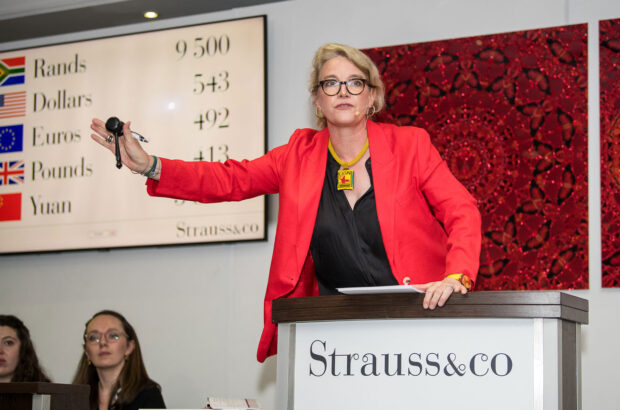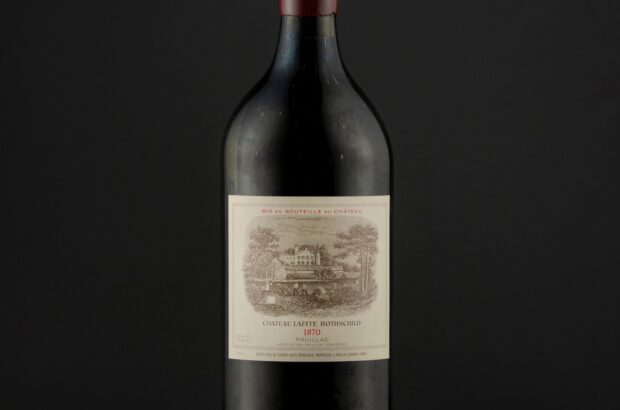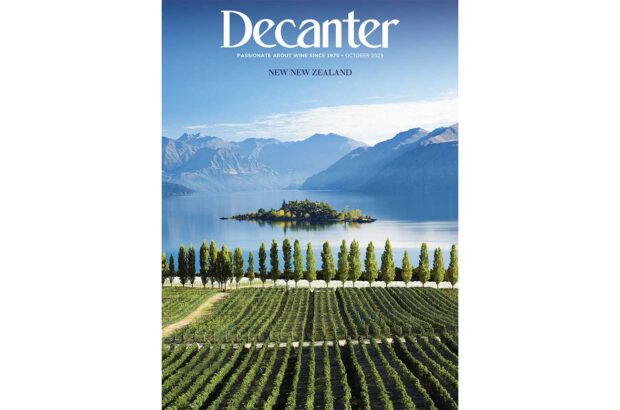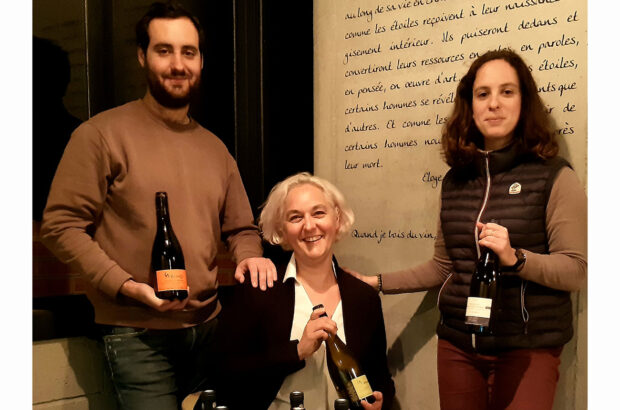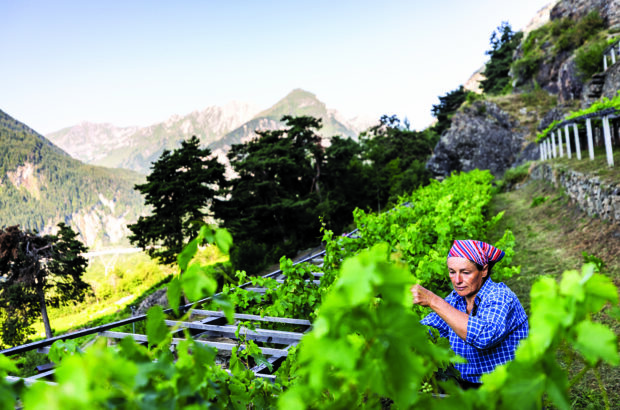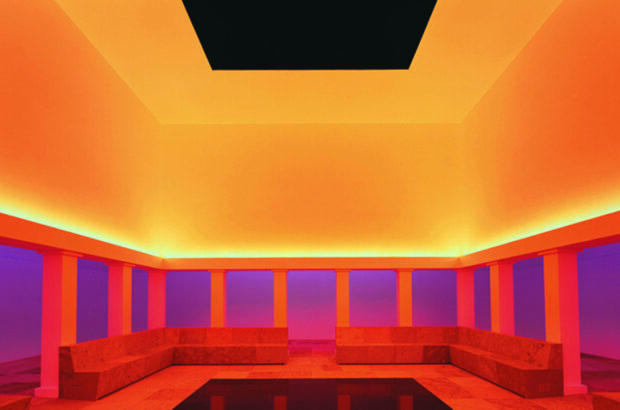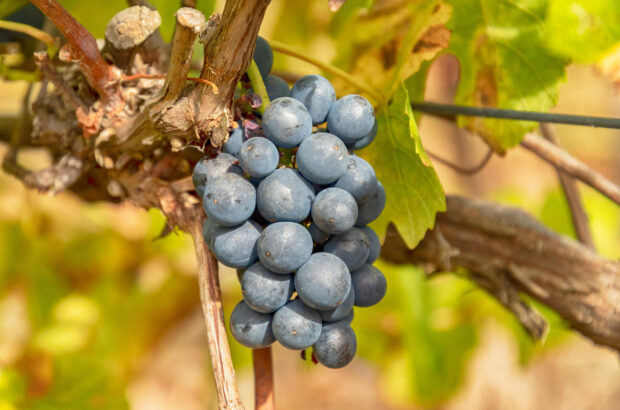Below, Decanter contributors profile some of the key people to know in the Rioja wine region.
Abel Mendoza Monge
Abel Mendoza Monge epitomises free-thinking and a long-term vision for Rioja Alavesa. His approach is to observe his vineyards, research their history, and interpret them in ways that, although new, are also deeply respectful of the land and culture.
Mendoza’s family were vine-growers, but he showed an early interest in making wine, too. Later, he teamed up with his wife Maite and launched a wine project that, while unmistakably Rioja, is also a flagship for innovation and originality.
Their winemaking principles are simple to define, but difficult to apply: know and respect your roots; explore the best expressions of your vines and wines, with no constraints to innovation; accept diversity; push for top quality and look beyond your lifetime, with the hope of leaving your land in a better state.
Mendoza’s wines show how the couple have accomplished their vision: instead of abandoning Alavesa’s classic cosechero (carbonic maceration) – as most other wineries did – they reimagined it as a joyous but complex style known as jarrarte.
Similarly, instead of replacing the unpopular Malvasía Riojana and Torrontés varieties, they have used them to create some of the best white wines in Rioja.
Indeed, theirs is likely to be the only single-variety Torrontés in the world (note: this has nothing to do with Argentinian Torrontés). Their blend of five white varieties is another rare, unique exploit.
However, Mendoza’s speciality is Tempranillo: delicately cultured, indigenous vines.
A grape whose wines excel only when a vine’s perfect balance is attained. Although great terroirs provide the conditions, the keys for success are deeply human: knowledge, respect for nature, experimentation and long-term vision. Abel and Maite’s wines – and their ethos – are a benchmark for all. Profile by Pedro Ballesteros Torres MW.
Familia López de Heredia
Although it’s not the oldest bodega in Rioja, this venerable house has become one of the most esteemed, and has remained virtually unchanged since it was founded by Don Rafael López de Heredia in 1877.
Sadly, he never managed to build his planned Arabic-style castle in the Viña Tondonia vineyard, but Don Rafael would be proud of the work done by succeeding generations to help preserve and carry forward his legacy.
A beacon of tradition and classic wines, López de Heredia has adapted to the times, but has never given in to fashions. Indeed, its cobweb-friendly cellars are filled with old barrels and well-rested wines. Here, patience is the most cutting-edge technology.
Siblings Julio César (in charge of vineyards) and Mercedes (winemaking) prefer to stay out of the limelight, letting their sister, María José, fulfil the role of ambassador for the family.
With her boundless energy and prodigious memory, she does a great job, and is always supported by her husband (who is also the company’s commercial director), José Luis Ripa.
However, when it comes to decision making, the family pulls together, says María José. ‘From 1924, our great-grandfather ran the business with his sons Rafael and Julio César; I like to think and feel that we now do the same,’ she explains.
As the bodega builds up to its 150th anniversary, Agustín Santolaya, director of Bodegas Roda, is full of praise for his neighbour in Haro’s Railway Station District. ‘The López de Heredias have been guardians of historical authenticity through the ages, but their spirit has always been young,’ he says.
‘María José embodies the passion of the 21st century while maintaining the essence of historical Rioja. Julio César strikes an incredible balance in viticulture, and Mercedes has achieved, almost inadvertently, a sort of revolution within traditional winemaking. Collectively, they have made the 19th century look young.’ Profile by Yolanda Ortiz de Arri Izarra.
Antonio Palacios
Even though he was born in Avila, Antonio Palacios – no relation to Bárbara Palacios – likes to say that he is perfectly adapted to Rioja. And it is indeed hard to find someone with such an impressive trajectory and knowledge, especially when it comes with this kind of empathy and modesty.
Palacios has a PhD in microbiological sciences, with a thesis on the ageing of red wines, as well as a master’s degree in oenology and viticulture. He is also a professor at the University of La Rioja, teaching sensorial analysis as part of the oenology degree.
Palacios’ greatest contribution to the region has been the creation of the Excell Ibérica laboratories in Logroño in 2008, where he is currently general manager.
The laboratories specialise in the microbiological and sensory analysis of wines, looking in detail at elements such as aromas and pesticides.
And the key significance of Excell Ibérica is its contribution to promoting new levels of quality in Rioja wines, in addition to supplying technical and scientific support to winemakers.
Tao Platón González, technical director of Península Vinicultores, says: ‘Antonio Palacios has been a reference for me since my student days.’
He believes Palacios’ greatest skill is that he ‘has been able to mix the most modern techniques in research with an unparalleled passion for wine and a pedagogical capacity in such a way that, if he did not exist, we would have to invent him’. He adds, ‘We are lucky to have him in Rioja.’
Ferran Centelles, wine writer and joint Regional Chair for Spain at the Decanter World Wine Awards, says: ‘If there is any problem regarding the quality of the wine, he is there to discover and solve it.’
Palacios’ most personal project as a winemaker is Crusoe Treasure – the first ‘underwater winery’ and artificial reef cellar in the world. It is a true reflection of his talent and research. In short, Palacios is one of a kind. Profile by Pilar Cavero.
Fernando Sáenz & Angelines González

Fernando Sáenz and Angelines González.
How does the Rioja region taste? To find out, visit DellaSera – a little ice-cream store in Logroño. Everybody in La Rioja knows Fernando Sáenz as ‘Fernando Helado’ (helado is Spanish for ice cream).
Born in Logroño 50 years ago, Sáenz has spent all his life there, studying his home region’s tastes and working as an artisan pastry chef who makes creations to be eaten frozen.
In 2008, Angelines González, a former lawyer, brought her own vision and management skills to the project. Together they run dellaSera, as well as Obrador Grate, a workshop where they focus on creating new flavours inspired by their own small vineyard of Graciano vines, fruit trees, and aromatic plants.
The ice creams from dellaSera and Obrador Grate are not only small pieces of art but they are also love letters to the region.
Instead of making ice cream from wine, they decided to embrace the whole process of winemaking and give many of its elements – even those bits usually thrown away – a second life.
Take ‘Chocobarrica’, a chocolate ice cream marinated with pieces of oak from used barrels of wine, or ‘Agraz and butter’, made with unripe grapes gleaned from the green harvest.
Or try their confection involving the ‘lees of Abel Mendoza’s barrel-fermented white’ and the ‘Racimas sorbet’ created from forgotten bunches left on the vine after the harvest – in November, Sáenz collects them himself when they are almost dried and sweet. The whole enterprise is a true destination for wine lovers. Profile by Pilar Cavero.
Carlos & Ignacio Echapresto
The Echapresto brothers spent their childhoods in the kitchen of Venta de Moncalvillo in Daroca de Rioja (a tiny village with only 30 inhabitants) watching their beloved mother Rosi cook.
It was perhaps inevitable that they would end up a sommelier and a chef respectively.
Thanks to their efforts, the family restaurant now has a Michelin star. La Rioja is a land of vegetables and wine, and those are the two pillars on which the brothers have built their success.
Ignacio, the chef, tries to use all possible vegetables from their kitchen garden. Artichokes, green peas, mushrooms and borage all play leading roles on the menu, and Ignacio knows exactly how to make them shine.
Meanwhile, sommelier Carlos has built an impressive wine list for the restaurant, featuring 1,500 wines from around the world – though, of course, the most significant section comprises the 150 whites and 650 reds from Rioja.
The restaurant’s beautiful cellar is like a time capsule, where Carlos amasses old vintages and outstanding bottles of Rioja, some of them impossible to find elsewhere nowadays. The oldest bottle in his unique collection is a 1904 vintage of La Rioja Alta, the year that gives its name to the brand.
Recently, the brothers have undertaken two additional ventures. Cocina de Madre is a new restaurant focusing on the most traditional recipes of Rioja. It is a tribute to their mother, who passed away in 2016.
Away from the world of wine, they have also set up the Moncalvillo Meadery and have developed five different types of mead using honey from the best parts of Rioja. Profile by Pilar Cavero.
Elena Adell

Elena Adell.
Although she is currently one of the most influential players in Rioja, Elena Adell is hardly high-profile. She is the unsung hero behind the most important trend in Rioja in the last 30 years: namely, the huge improvement in the region’s more affordable wines.
Rioja has built its mounting prestige on those highly accessible bottles, as much as the rare single-vineyard or ‘author wines’ that get so much attention from the critics.
That may sound somewhat over-enthusiastic, but consider this: Elena Adell is the alma mater of more than 42 million bottles of Campo Viejo, 80% of which are distributed in more than 70 countries annually.
The Campo Viejo brand is a reliable entry point to the category for new wine drinkers: the wines are clean, balanced, suave and well aged, and they are unmistakably Rioja. A lot of people fall in love with the region’s wines through Campo Viejo, and many remain loyal to the brand forever.
I cannot imagine a more difficult task for a winemaker than ensuring that 3.5 million cases of wine are made with consistent quality, environmentally respectful viticulture and genuine brand identity.
Her way of making wine is far removed from the currently popular, non-interventionist approach, which romantically claims that one does nothing in the winery. She does a great deal. There is something more profoundly human and very honest behind Adell’s endeavour.
Let’s not forget that her benign influence will last for many years – many younger-generation winemakers in Rioja have learned from her.
In this way, hundreds of professionals and millions of wine drinkers will be enjoying Adell’s subtle but sound influence for many years to come. Profile by Pedro Ballesteros Torres MW.
Juan Carlos Sancha & Fernando Martínez de Toda
As a professor of viticulture at the University of La Rioja, Fernando Martínez de Toda has taught several generations of winemakers how to tend vines and produce quality wines.
A national authority in his field, with a wealth of articles and books to his name, he is also an engaging communicator and is the driving force behind the recovery of endangered grape varieties in Rioja – a project he began working on in the late 1980s.
Juan Carlos Sancha, an agronomist who also started teaching at the University of La Rioja, was Martínez de Toda’s main partner in the project. Sancha has devoted his career to developing the potential of these threatened varieties, first at Bodegas Ijalba, then through his own venture in his hometown of Baños de Río Tobía in the Alto Najerilla valley.
Here Sancha grows and produces varietal wines from Garnacha, Tempranillo Blanco, red and white Maturana or the extremely rare Monastel grape. He is a staunch advocate of old vines, traditional vineyards and Viñedos Singulares, Rioja’s new single-vineyard category.
Pedro Balda, who works with the duo and gained his PhD in minority grapes with Martínez de Toda, says that they are each very different. ‘While Martínez de Toda is a true gentleman and a brilliant mind, Sancha is a tireless worker and a man of action,’ Balda explains.
In their own ways – Martínez de Toda in academic circles and Sancha within the wine industry – both men have championed sustainable viticulture (environmental and economic sustainability), encompassing the challenges posed by climate change, and the need to preserve varietal and genetic diversity in Rioja’s vineyards in order to produce distinctive wines with a sense of place.
One of these wines is Peña el Gato, a Garnacha that Sancha produces from a hundred-year-old vineyard grown by Martínez de Toda at 650m in Badarán, a village near to Baños del Río Tobía. They practise what they preach. Profile by Amaya Cervera.
The Vivanco family

Photographed in 2013, the late Pedro Vivanco (centre) with sons Santiago (left) and Rafael Vivanco Sáenz
‘How can a single family have collected so much and in such an important way about the history and culture of wine, its technology and traditions?’
Hugh Johnson OBE posed this question after visiting the Vivanco Museum in Rioja. Certainly, the sheer size of the place, the diversity of items on display and the way the world of wine is introduced to all kinds of visitors (not just oenophiles) exceeds expectations.
Pedro Vivanco (1946-2016) was a key figure in Rioja. A stakeholder in many wineries, he was a leading purveyor of wine within the appellation but also traded table wines and ventured into other areas.
He became a voracious collector of all kinds of wine-related objects and artefacts, from books and paintings to wine presses and corkscrews. His aim: to return to wine what wine had given to him. After the creation of the Vivanco Foundation in 2001, the Museum opened its doors in 2004.
His legacy continues with his two sons: Rafael, who oversees the winery built next to the Museum, and Santiago, who is at the helm of the Foundation.
Like a patron of the Renaissance (but helped by a team of 20 people), he oversees a documentation centre, a publishing house, and a wealth of cultural activities.
The Foundation has established agreements and partnerships with a dozen institutions and bodies to promote wine culture, while the family has also funded archaeological excavations on their vineyard in Tudelilla in Rioja Oriental, and is now involved in a project to identify the DNA of the 2,000-year-old wine-grape seeds found at the site.
Whatever initiative they choose to launch, the whole region benefits. Profile by Amaya Cervera.
Basilio Izquierdo
With more than 50 vintages under his belt, veteran Basilio Izquierdo is one of the most respected winemakers in Rioja.
Born in La Mancha in 1947 and trained in Bordeaux, he knows his adopted region and its historic wines better than most, having been head winemaker at CVNE between 1974 and 2006.
He oversaw the wines of Imperial, Viña Real and Contino for more than 20 years, and some of the legendary vintages carry his signature.
In 2007, instead of retiring after his time at CVNE, Izquierdo hired a space in a rambling building that used to belong to the cooperative in Laguardia and set about making a diverse variety of limited-production cuvées.
He doesn’t own vineyards but sources the grapes from selected sites across the appellation, and always from old vines and traditional varieties – he was one of the first advocates of Garnacha Blanca, a minority grape that dominates in his B de Basilio Blanco, a wine made for long ageing.
Aged 74, Izquierdo is as inquisitive and dynamic as any up-and-coming producer. He makes classic Rioja whites and reds in his crammed three-storey winery, but also sparkling wines, whites (produced under a veil of yeast, aged in Sherry butts), orange wines and everything in between.
In partnership with his university friend, Serge Fourton, winemaker at Baron Philippe de Rothschild from 1974-2004, Izquierdo has made a red Rioja from the 2019 vintage called Duo which they plan to sell through La Place de Bordeaux.
‘It’s the same concept as my B de Basilio red, blending grapes and meant to be aged, but it has the French touch,’ he says. Profile by Yolanda Ortiz de Arri Izarra.
Bárbara Palacios

Bárbara Palacios and her dog Merlot. Credit: Fernando Bóbeda.
Strong-willed: this is a phrase that perfectly describes Bárbara Palacios, and the approach she has needed to carve a path for herself.
It’s not easy to carry a famous surname, especially when she is currently the only woman winemaker in a dynasty that also includes her father Antonio Palacios (in Rioja), her uncles Alvaro Palacios (Priorat, Rioja and Bierzo) and Rafael Palacios (Valdeorras), and her cousin Ricardo Palacios (Bierzo).
Having taken on her father’s vineyards in 2005, Bárbara is particularly well known for the quirk of inheriting Merlot as well as Tempranillo vines.
It explains why her late, much-loved golden retriever was called Merlot, and why her brand includes that variety in its title: Barbarot. Her dog Merlot has now been replaced by a youngster, Puppi, named after her other red wine.
Bárbara trained in Bordeaux and gained winemaking experience at Château Margaux and Château Pichon Baron, as well as the Napa Valley, New Zealand, Italy, Chile and Argentina. After making her wine in friends’ wineries in Rioja, she set up her own bodega near Briones in 2008.
Her Barbarot red comes from a vineyard in Haro at 500m which her father planted in 1989. It is made with 16% Merlot and spends 16 months in French oak. ‘The year 2015 marked the “before and after”, as I grew the production and launched Puppi,’ she says. Puppi comes from younger vines, with six months in used French oak. Barbarot is the senior, structured and foursquare, while Puppi bursts with energy.
She is now planning to produce a white wine. Her father had a vineyard planted with Tempranillo bush vines, and in 2019 they decided to convert the highest section with its limestone soils at 520m and use it for growing vines for white wine (an area of 0.6ha).
She has chosen to plant Garnacha Blanca ‘for its plump, aromatic deliciousness’. She says that the vineyard should give vibrant acidity: ‘My plan is to do a little maceration with the skins, and ferment and age in second- or third-year barrels.’ One to watch. Profile by Sarah Jane Evans MW.
This article first appeared in Decanter magazine’s Rioja supplement 2022.





